HR teams have been gathering and analyzing data for years, from headcount, compensation, job title and function, work location to hiring, onboarding, churn rate, employee engagement, diversity and inclusion, learning and development, and much more. All this data pours in from multiple departments and helps marketing teams to design better recruitment ads and helps HR teams understand their workforce, efficiently deploy resources, etc. But how much of this data can be used to improve the quality of human capital management (HCM) in an organization?
HR leaders need to identify the metrics that will help them monitor employee performance and engagement to reduce turnover and build a more productive workforce.
What kind of HR metrics can help improve HCM?
From submitting a job application to retirement, HR analytics offers insights into an employee’s entire journey.We’ve outlined six HR metric categories that will help any HR department prove its mettle.
Revenue per employee: This highlights the average revenue each employee generates and is a measure of how efficient an organization is at enabling revenue generation through employees.
Offer acceptance rate: A higher rate of job offers confirms a good ratio, and is calculated by the number of formal job offers by the total number of job offers rolled out in a given period. If the ratio is low, this data can be used to redefine the talent acquisition strategy.
Cost of training per employee: Calculated by dividing the total spend on training by the total number of employees who underwent training, this ratio is an important metric that helps determine the training efficiency. Low efficiency may require a re-evaluation of the training expense per employee.
Voluntary turnover rate: As the name suggests, voluntary turnover refers to when an employee decides to leave his/ her job. The rate of voluntary exits, derived by dividing the number of employees who quit voluntarily by the total number of employees present, points to the possible gaps in the employee experience that could be leading to voluntary attrition.
Involuntary turnover rate: There could be several reasons why an employee is asked to quit an organization. A high involuntary turnover rate, calculated by dividing the number of employees who left involuntarily by the total number of employees, suggests that there could be errors in the recruitment practices resulting in a gap between the organization’s expectations and employee skills.
Time to fill: If it takes longer for the recruitment team to fill an advertised position, it suggests that they could be unreasonable in their ask or that they need to fine-tune the list of requirements and cast a wider net. A prolonged time to fill could also point to inefficiencies in recruitment practices.
Time to hire: This is another important metric to measure. It calculates the time elapsed between approaching a suitable candidate and the candidate’s acceptance of the offer made. While a longer time to hire could also be because of some reasons not in HR’s control, it is a useful data point. Recruitment teams can take a data-driven approach to reduce the time to hire and see what they can do to reduce time to fill, data-driven analysis of time to hire can benefit recruiters and help them improve the candidate experience.
Absenteeism: This is a productivity metric calculated by dividing the number of days missed by the total number of scheduled workdays for each employee, and points to the number of leaves taken by an employee. A higher ratio could suggest poor employee health or personal problems etc that the HR team could help address. It can also serve as an indicator of employee happiness.
Human capital risk: A higher level of analytics, it refers to factors such as a lack of qualified employees, shortage of specific higher-order skillsets, lack of employees that can grow and fill mid- and senior-management positions, reasons why employees could leave their job (bad manager, poor compensation, no clear growth plan, etc), and other such important factors.
Collaborate to find the right HR metrics
HR analytics help HR teams set goals, measure success, and optimize processes so that the HR team can also play an important role in driving revenue. When used intelligently and effectively, HR analytics provide the insights organizations need to tackle challenges like lack of diversity, inefficient processes, or a high turnover rate. But while metrics are important for the HR team, the CHRO also needs to identify which specific metrics to measure over the long term based on the overall business strategy and goals of the organization as a whole. This will require collaboration starting from the top down. The CHRO will need to ensure that the desired outcome for each HR metric is well defined, and take the guesswork out of HR, allowing the HR function to become more trusted by the C-suite.


